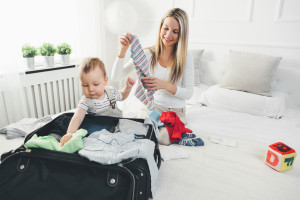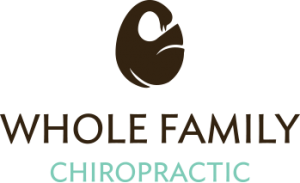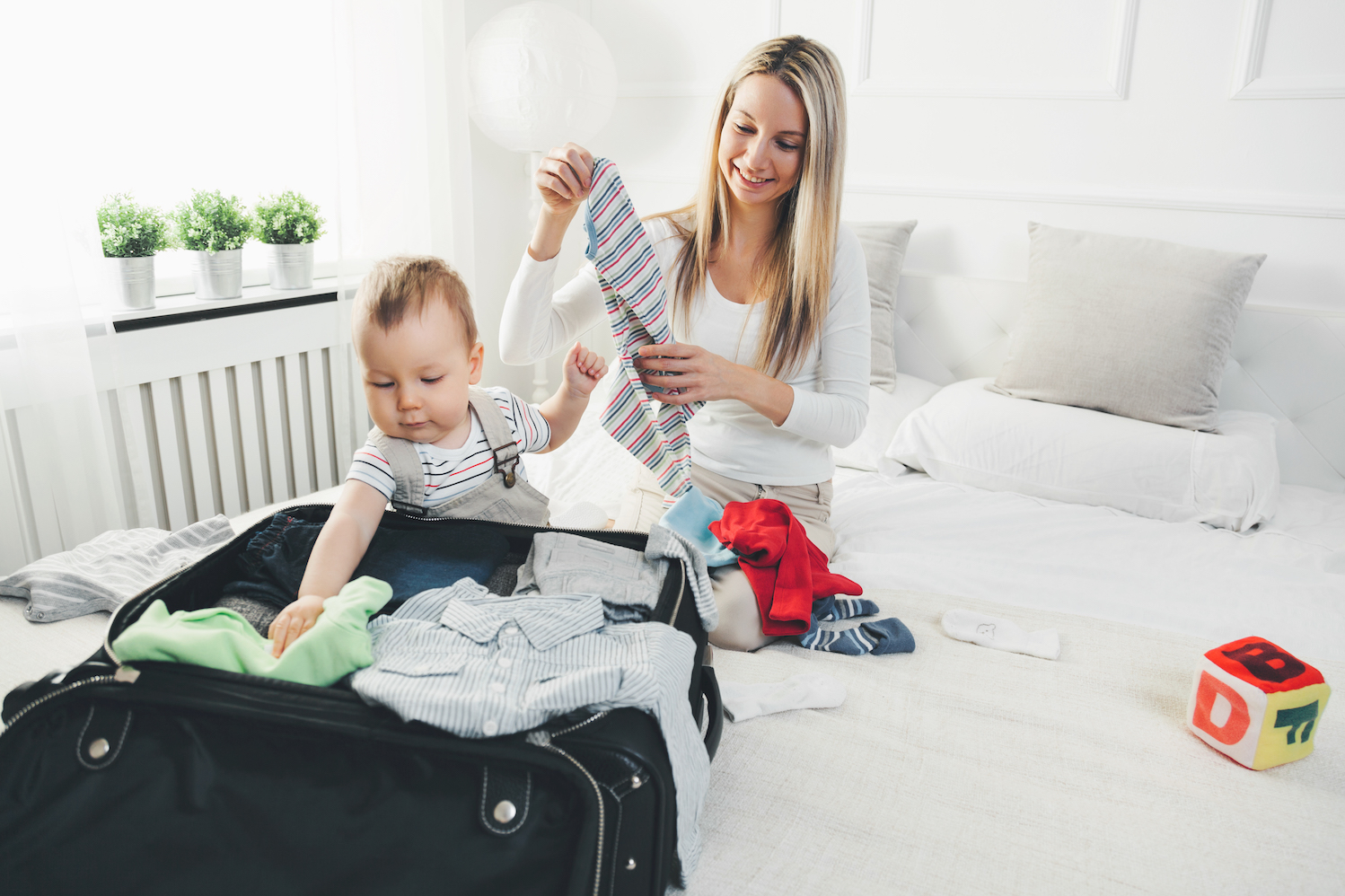
Traveling with Babies and Toddlers
Whether traveling by car or by plane, traveling with children does require some extra work. However, with some planning, organization, and a few preparations, family travel is possible – and can even be enjoyable! This blog will focus on air travel with children under two, but stay tuned for tips on car travel and traveling with older children.
How Young is Too Young?
Check with your pediatrician regarding when they feel comfortable having you fly with your baby. If possible, it is often recommended to wait until your baby is at least a few months old, once they have begun to build their immune system.
Packing
The challenge in packing for air travel is striking the balance between being well-prepared and needing to rent a small U-Haul to tow your belongings to the airport. It’s important to have extra diapers in your carry-on in case of a flight delay, for instance, but probably not necessary to pack four extra outfits on the off-chance your baby has multiple blow outs. In dire straits, your Parental Creative License will prevail and you’ll make something work!
Try to think through what you’ll need at the airport versus what you will need once you are at your destination – for instance, you may opt to check your stroller at the ticket counter and carry your infant through the airport in a carrier.
It can be helpful to create a master list of things to pack for your baby. Make notes and adjustments as you pack, while you travel, and once you’re home of items to remember for next time. You can slip the packing list into a plastic page protector, cross items off with a dry-erase marker once they are packed, and then erase with water after the trip. It can also be helpful to have seasonal lists (i.e. winter and spring/summer). Keep this list on your computer where you can edit and reprint it.
Preparing for Your Flight
- If your baby is under age two, you will likely have the option of traveling with your baby in your lap (versus paying for their own seat). This is a personal preference, as some families feel safer having their child secured in their car seat, in their own seat. Having our infant/baby in our lap has always worked well for us.
- If your infant will be traveling in your lap, you will need to modify your ticket to designate “Infant in Arms.” This can sometimes be done through your airline’s online reservations page or may need to be taken care of by calling the airline directly.
- Plan to bring a copy of your baby’s birth certificate to verify their age. This is especially important if your baby is nearing age two and the airline needs to verify their age.
- In the week(s) leading up to your flight (and during your trip, if possible), do whatever you can to help boost your baby’s immune system to prevent them getting sick before or during travel. Chiropractic adjustments, probiotics, elderberry syrup, and of course, a healthy diet and plenty of sleep are all ways to boost your child’s immune system.
What to Expect at the Airport
In our personal travels with an infant, we have found some discrepancies in what is allowed in the security line and on the airplane. In general, here are some guidelines of what you can expect.
- On most airlines, strollers and car seats can be checked for free, either at the ticket counter or at the gate. Expect to pay to check pack and plays and other equipment.
- As you go through security, you will need to take your baby out of their carrier or stroller and carry them through in your arms. Strollers can either be folded down and sent through the security scanner’s conveyor belt, or pushed through – however, in this case, it will need to be hand-inspected so takes additional time. The parent carrying the baby will go through the metal detector (instead of the x-ray machine) and their hands will be swiped/scanned by a TSA official. Oftentimes you are allowed to keep your sweatshirt and shoes on.
- You are allowed to bring your breast pump, frozen breast milk, formula, and any other liquids for your baby (even juice). The 3-ounce rule does not apply to these items. However, all of these liquids/items must be inspected when going through security, so they must be in a clear container. Otherwise, the TSA agent will have to open/unseal the beverage (i.e. juice box) and inspect a small amount. And again, speaking from personal experience, their offer to tape it shut is not very effective! Clear bottles/beverage containers are the way to go, lesson learned!
- Some airports have lactation rooms, which are often private, locked rooms with a chair for nursing, changing table/counter, and private bathroom. This is a great amenity when traveling with an infant, whether or not you are breastfeeding. Check with your airport’s info desk, as you often need to be escorted to the room by a volunteer so it can be unlocked for you. If your airport does not have a lactation room, there are usually family restrooms located throughout the airport, which can also be helpful.
Now that you’ve successfully navigated your way through the airport, it’s time to board the plane! In our next blog, we’ll discuss what to expect on the plane and during the flight.
Check it out here: Key Tips for Airplane Travel With Your Little One
Guest Blog Written By:
Happy Family Mother and OT Senia Lee


